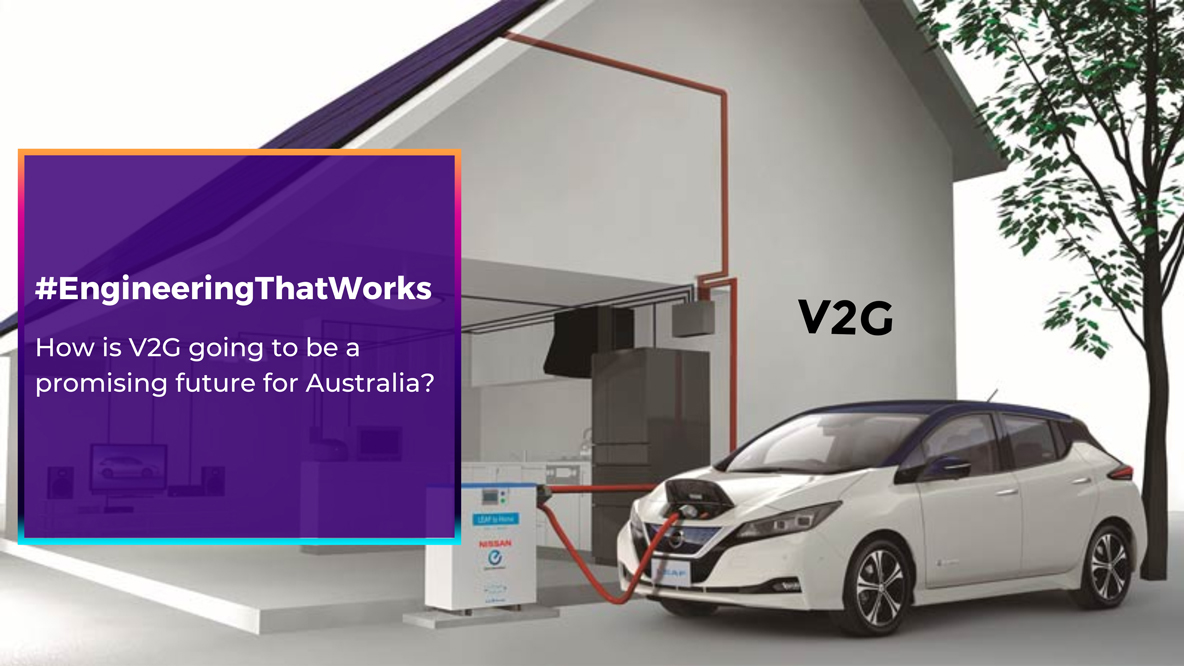Vehicle to Grid (V2G) Technology: Promoting Energy Transmission Through Battery on Wheels

Electric Vehicles (EVs), considered big batteries on wheels, are the latest trend in the energy system to avoid the usage of fossil fuels and to promote a pollution-free environment. As the use of Electric Vehicles is gaining traction, reports say that by 2030, there will be 140–240 million electric vehicles worldwide, which means a minimum of 140 mobile power storage units — at no extra cost — readily available for any shortcomings of power in the grid or households.
Consider situations when your sustainable energy solutions, such as your solar panel or wind turbines, have not been able to generate the required energy, and a sudden power outage has occurred. Thanks to the V2G technology, your EV battery could rescue you!
Vehicle to Grid (V2G) is a technology through which unused power from batteries in electric vehicles can be pushed back to the smart grid using a bidirectional charger that you can control remotely. Also known as Car to Grid, this technology enables an electric car battery to be charged and discharged based on the signals that indicate power consumption or production in nearby areas, thus balancing the variations in the energy production or consumption. Eventually, car batteries act like power storage units that can be used to drive or return to the grid when needed.
Using V2G, EV cars can communicate with the smart power grid and sell excess power based on the demand or throttle their battery charging rate.
Benefits of the V2G Technology
So, while conventional batteries are readily available as a backup energy source, why rely on EV batteries? Unlike traditional batteries, EV car batteries store way too much power and hence can serve as larger power banks compared to a conventional batteries. By providing an on-demand supply of energy from EV car batteries, V2G is beneficial not just to the EV owner but also to the grid.
The following are benefits that we can look forward to in the V2G approach of storing energy:
- V2G enables consumers to meet clean energy goals by reducing carbon emissions and eventually minimizing fossil fuel usage.
- Electric Vehicle owners can sell surplus energy in their car batteries to the smart grid, thus gaining monetary benefit.
- During high demand or peak hours, EVs cars enabled with V2G can coordinate with the smart grid and send power back to the grid through specialized bidirectional chargers to stabilize the grid.
- Power rolled back to the grid substantially reduces the load on the grid by effectively handling immediate energy demands. In addition, the discharged EVs can recharge their batteries when the energy supply is in excess, for instance, on a sunny day or when the power demand is less.
Challenges in Implementing V2G
hough V2G proves to be a promising energy solution, the widespread adoption of this revolutionary technology is relatively slow considering the implementation challenges such as the absence of standards for V2G systems to interoperate, increased cost for bidirectional charges, a limited number of EV vehicles compatible with bidirectional charging, and most importantly, formalization of guidelines for regulations and safety standards.
However, irrespective of the challenges put forth, EV manufacturers and consumers are slowly but steadily embracing this new technology to do their bit for a sustainable future.
How is V2G going to be a promising future for Australia?
Australia is one of the forerunners in adopting and promoting sustainable energy to tackle the impact of climate change. In that regard, the Australian Capital Territory (ACT) is working towards reducing net carbon emissions to zero by 2045. To reach their goal, ACT is on a mission to help its residents improve their household efficiency by moving to environment-friendly technologies.
By using energy-efficient technology such as the V2G, owners of EV cars compatible with the V2G technology can charge their vehicles during the day from energy generated from solar panels, then export the same energy back to the grid later in the night to offset peak hour power requirement. Such effectual power usage is a positive shift towards a sustainable and eco-friendly future.
Final Thoughts
In conjunction with the V2G technology, smart grids have revolutionized the electrical engineering industry and paved more innovative methods to harness surplus power in EV car batteries. With a substantial return on investment for consumers, V2G exhibits a promising potential to decentralize the energy system while taking the world’s economy to the next level.
Though the world is gearing up to embrace this new technology amidst several challenges and roadblocks, the question is, how ready are you? At Polygon Energy, we are well-equipped with the expertise and knowledge to help you with any queries that you may have regarding the V2G technology. If you want to implement V2G in your house or a commercial establishment, our certified skilled professionals will help you have a hassle-free switch to V2G. Make a wise move; opt for V2G today!
